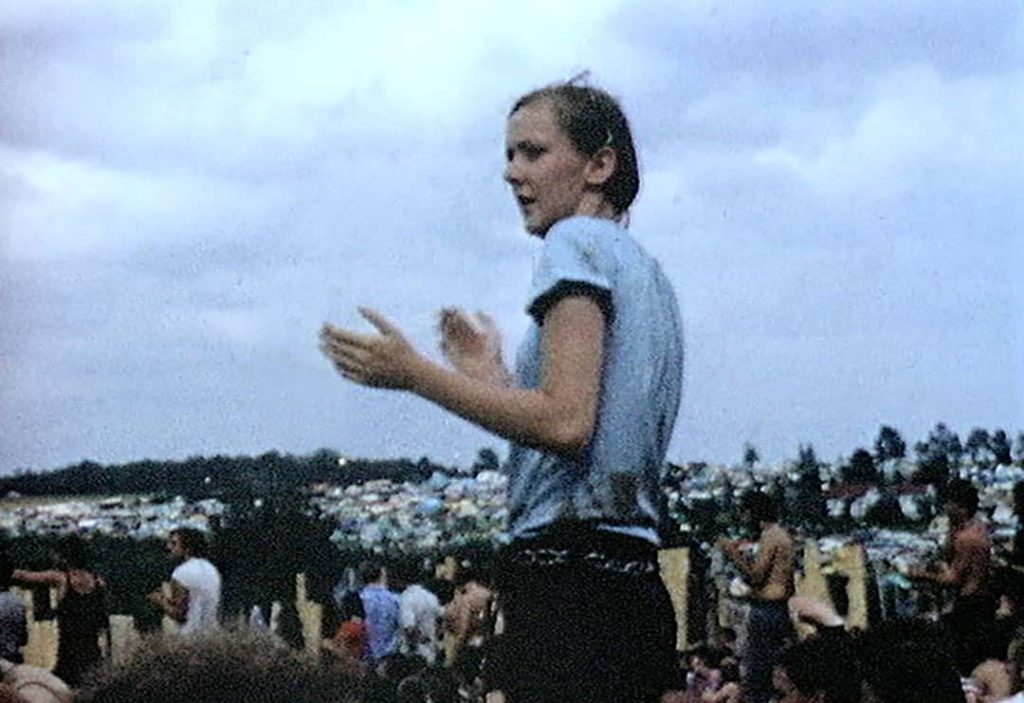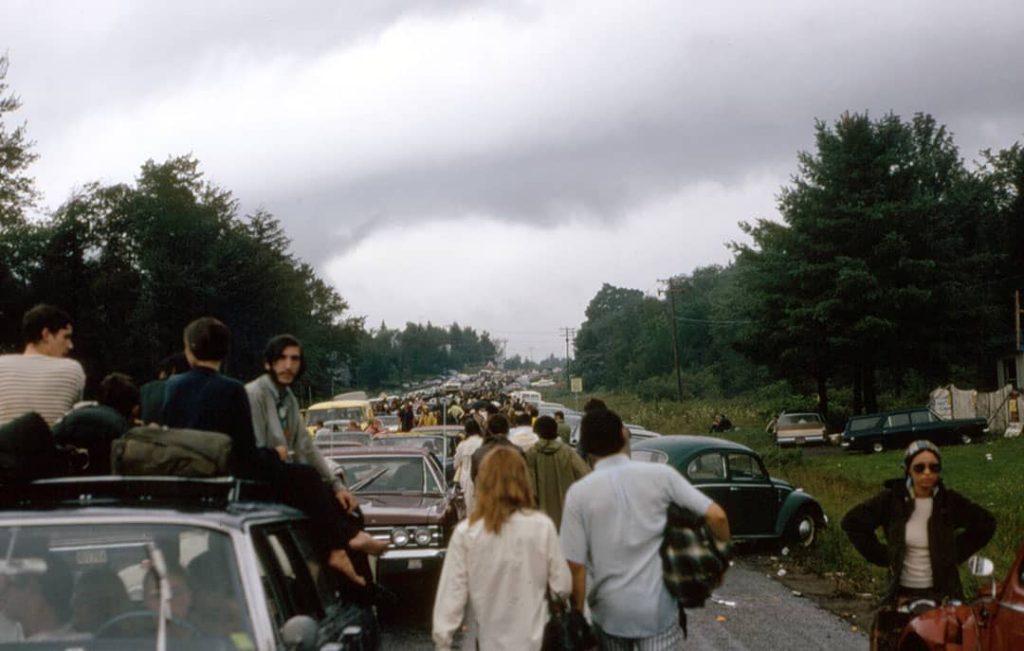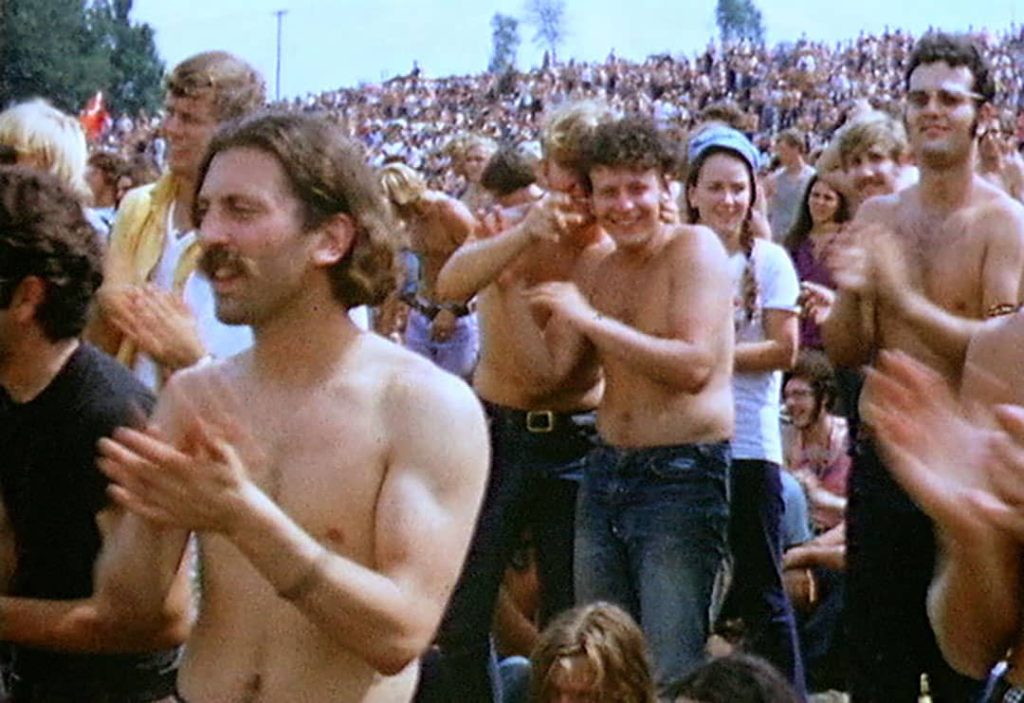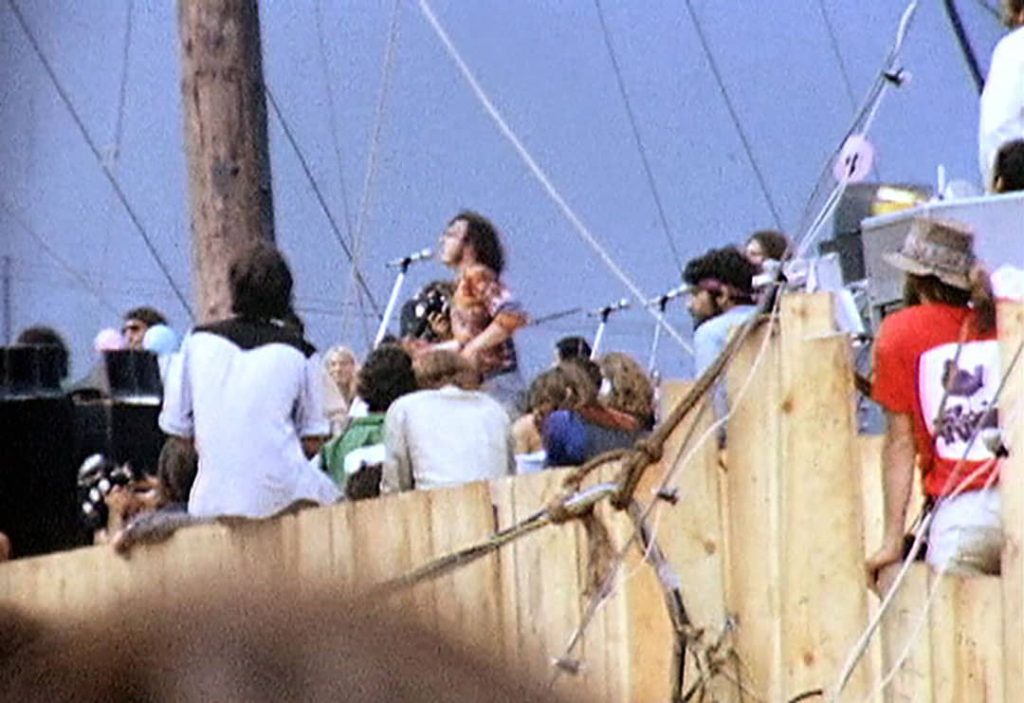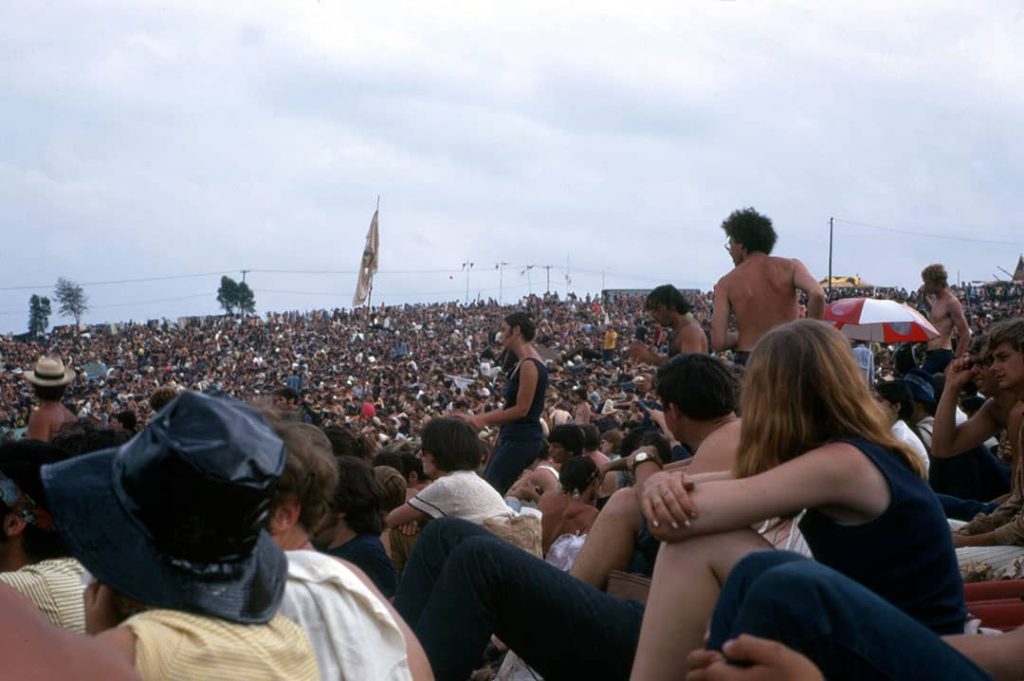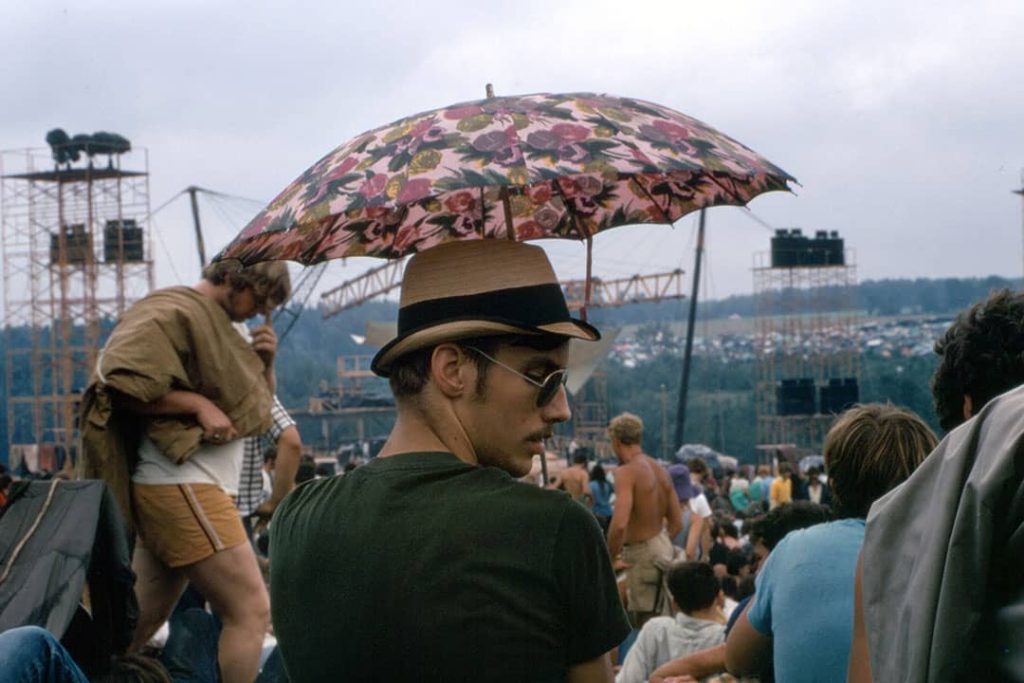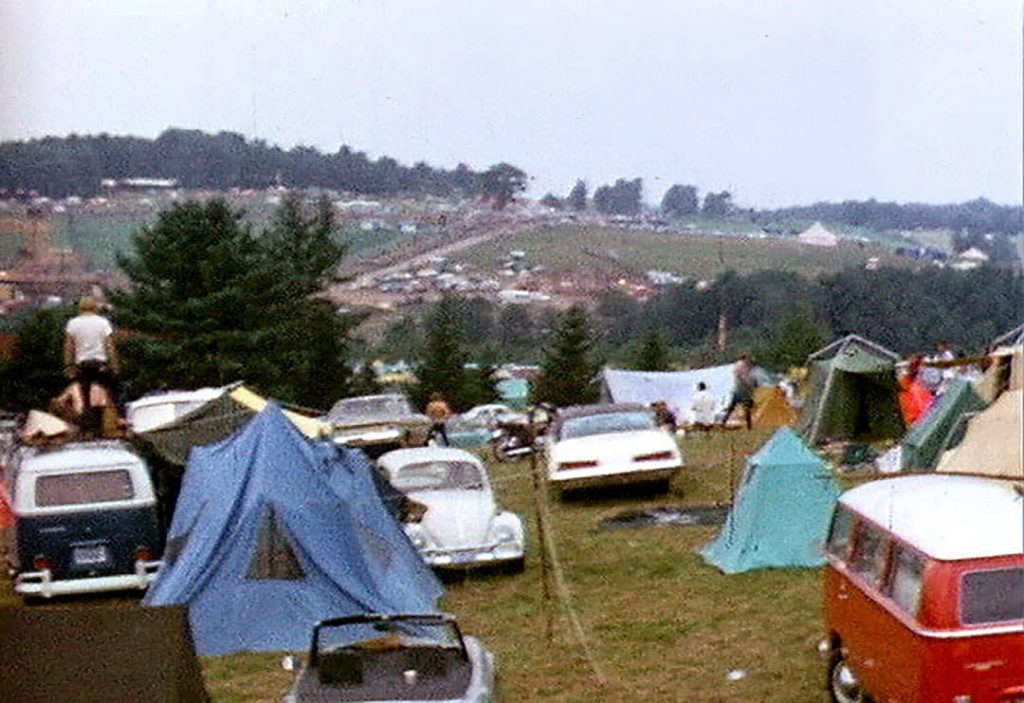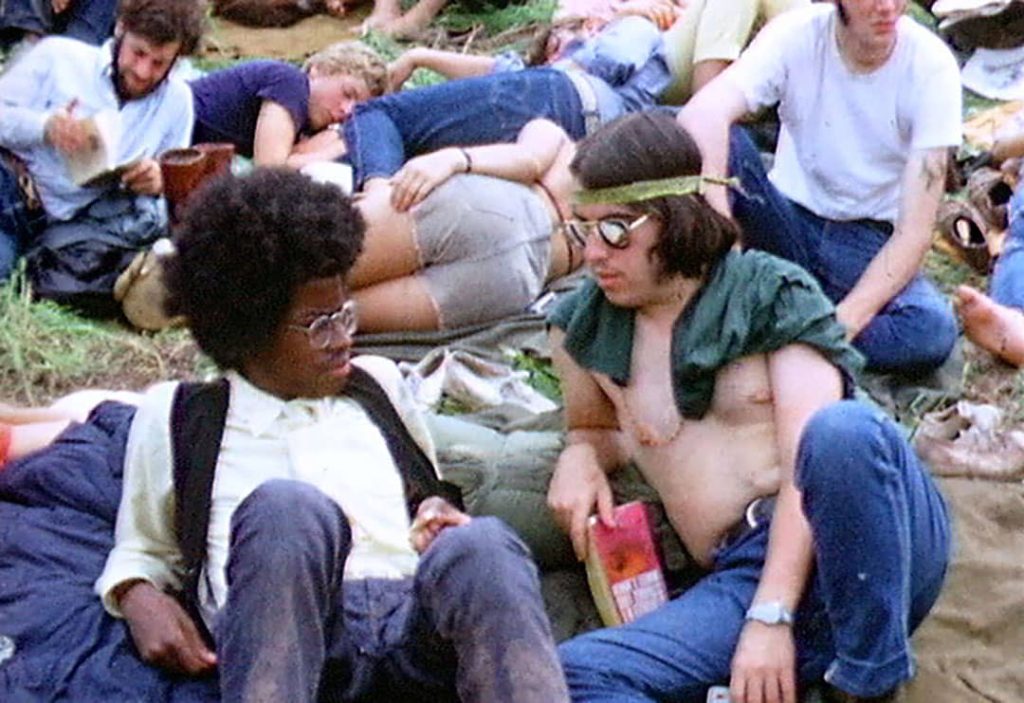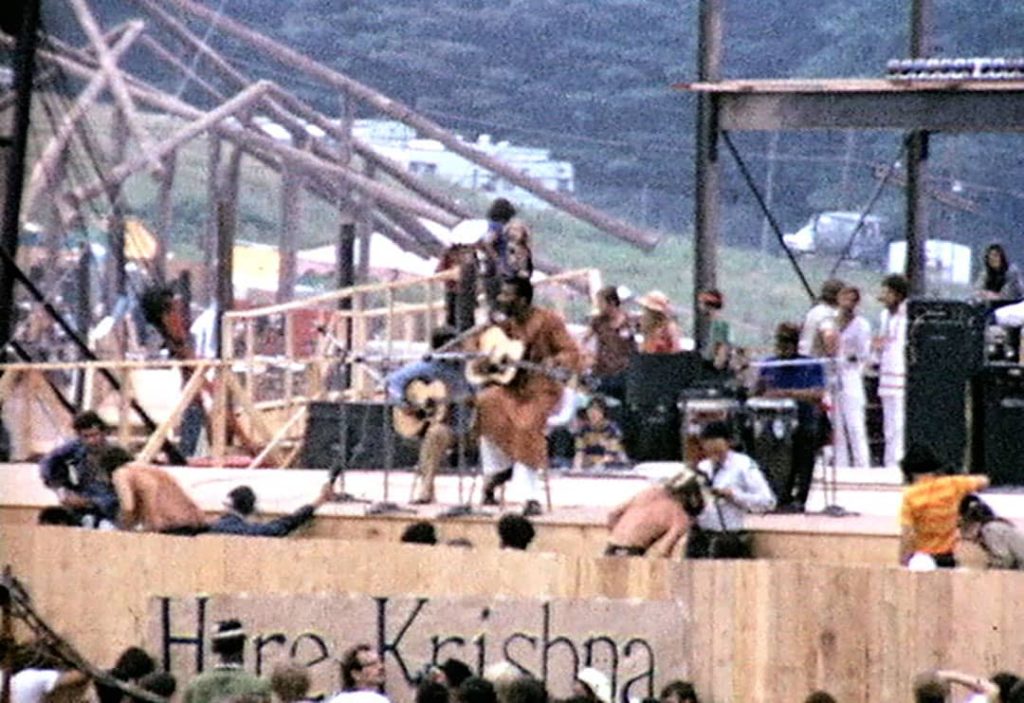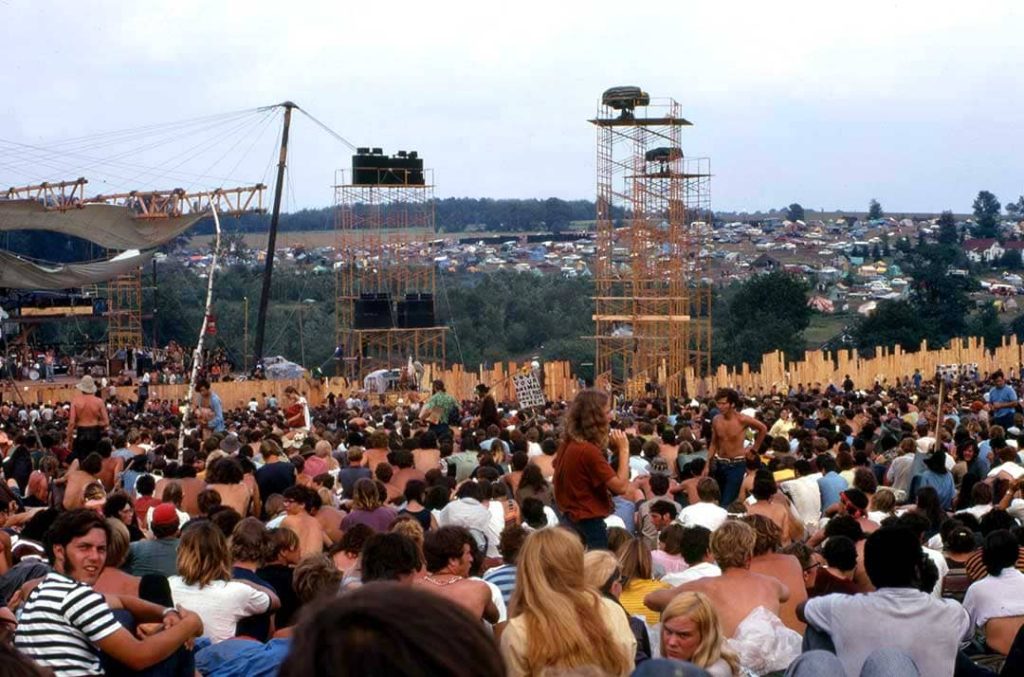
Woodstock: The Festival of the Decade
Woodstock was the festival of the decade in the 60s, and one that led the way for many other iconic festivals and music events to follow. Taking place on a dairy farm in Bethel, New York, owned by Max Yasgur in 1969, Woodstock has gone down in the history books as being a monumental moment in western popular music.
The festival originated somewhat by chance as the joint brainchild of two New York City entrepreneurs, Joel Rosenman and John P. Roberts, when approached by another pair, Artie Kornfeld and Michael Lang, the latter of whom had previous experience as a promoter co-organising the Miami Pop Festival on the East Coast the year before.
At the start of 1969, Roberts and Rosenman were in the process of building a large recording studio called Media Sound in Manhattan. Because of this project, a lawyer working for Lang and Kornfeld, who had also worked on the Media Sound project, suggested they contact the entrepreneurs in regard to funding an idea they had of building a smaller studio outside New York City in the small town of Woodstock, which is situated in Ulster County, New York State.
Rather than agreeing to the original proposal, Roberts and Rosenman came back with an alternative idea to hold an event that would echo the feel of the area and play host to the types of artists known to visit it.
The four agreed, and confirmed their plans in January 1969 as Woodstock Ventures was formed.
Originally, the festival was supposed to take place in the town of Woodstock, but following rejections on the idea from locals of the town a new venue needed to be located. Trying other locations without any success, the organisers eventually found, settled and secured the dairy farm site, which was actually 40 miles southwest of the town of Woodstock.
The festival was to be held that same year during the summer, from 15th – 18th August, being billed as ‘an Aquarian Exposition: 3 Days of Peace and Music’. 50,000 was the number of festival-goers the organisers originally thought would attend the event, but in fact around 186,000 tickets were sold in advance. The difficulties involved in securing the final venue left the organisers with little time to prepare. A few days before the event was due to open, construction staff gave Rosenman the choice of whether to complete building of the stage or complete building of the ticket booth and gates in time for the opening date. There was no sensible option but to prioritise completing the stage so that at least bands had a secure platform for their equipment and could be seen by the crowds. But the absence of gates and ticket booths meant that the festival was now technically free, and meant that the organisers risked financial ruin due to the loss of those ticket sales. At the same time, it saw more than 400,000 attracted to the event, resulting in a risk of severe overcrowding, and in emergency supplies of food and drink having to be shipped in by military helicopters after all the catering facilities in attendance had run out.
32 acts performed across the weekend, including The Who, Janis Joplin, Blood Sweat and Tears, and Creedence Clearwater Revival (the first to have signed up to play).
A number of other bands were asked to play the event but declined for various reasons, a decision they may well have regretted after the fact. The event proved iconic, and following it in 1970, a documentary film was created along with an accompanying soundtrack album and a song written by Joni Mitchell (even though she didn’t personally attend, she used what she saw on television as her inspiration).
Accolades the event has secured in more recent years include it making the top 50 Moments That Changed the History of Rock and Roll, coming in at number 19 in 2004, and the festival site being listed on the National Register of Historic Places in 2017.
Many would argue that no music festival since Woodstock has ever lived up to or surpassed the unique experience it offered at a time of great musical creativity and profound social change in modern America.
